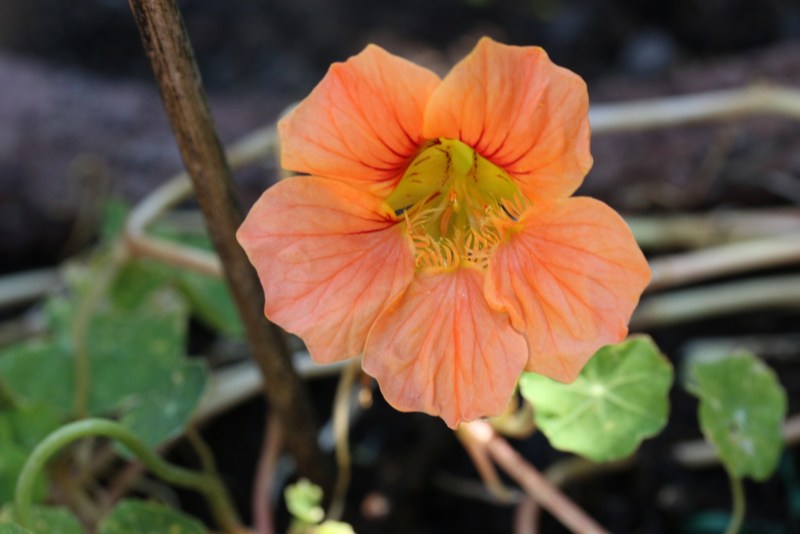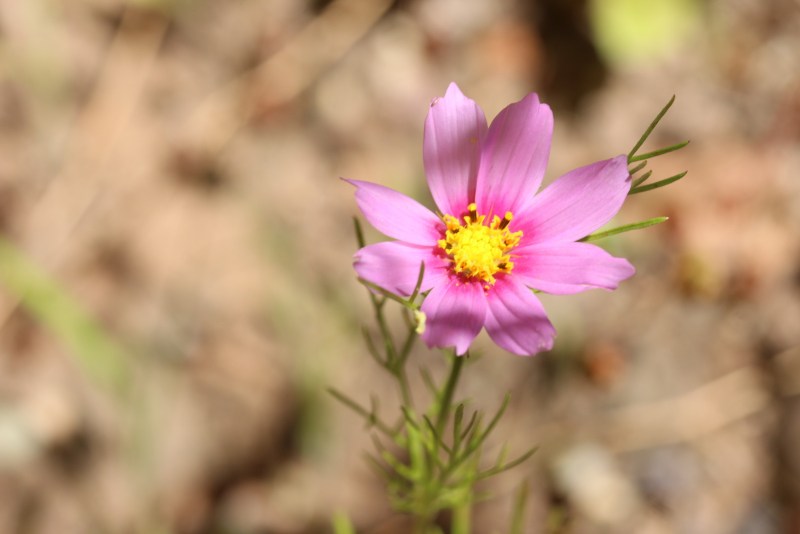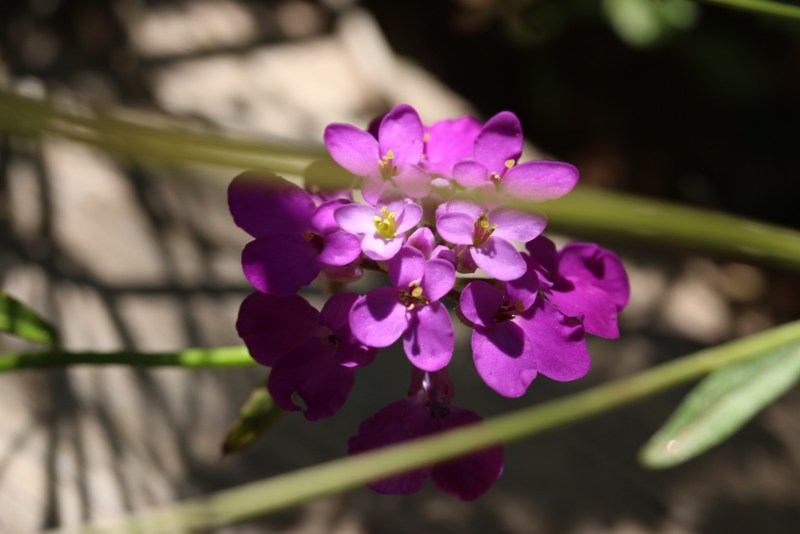As you may recall, our house is built on pretty steep terrain. The ground floor windows in the front are the first floor in the back. From there you have another treeish metres height difference to the garden. last year we had the stairs remodelled, since the old ones were rapidly becoming accidents waiting to happen. The slopes on either side are still steep and this year we started to stabilise the left hand side so we can put a lamppost on top.
The small area created at the top has been sown with “butterfly meadow” and “wildflower mix”. You can buy these seed mixes easily in Germany as many people are trying to bee more friendly. I also always toss a few handful on the rest of the area, which remains in pretty disarray.
The dark side of the pumpkin patch. That area is more or less permanently in shade and this year we just didn’t have the nerve to look for something that would thrive there after the slugs ate the first round of plants. Suggestions welcome. But you can see the structure well.
The pumpkin/squash/courgette patch. they are coming along nicely with several promising plants already. Only I never know what is what. You can also see the bane of my gardening existence: Horsetail. A plant that survived the dinosaurs. Common gardening advice is “nuke it from orbit”. It spreads through rhizomes that are also very fragile and will snap quickly so you’ll never get them all out. But you can make some wonderful fertilizer out of it: put the plants into a bucket with water and let it rot. Stinks like hell, but 100% organic, free and efficient.
The flowers currently blooming in that top area is mustardseed or white mustard. And that in my garden, when mustard is not welcome in my kitchen! Actually, when you drive along some fields in late autumn thinking there’s rapeseed blooming and wondering why, that’s usually white mustard that is planted to enrich the ground. Other plants are growing but haven’t bloomed yet.
Another plant I love growing is nastriums. No fuss and all edible. The kids just love grabbing a leaf or flower and munching it down.
There are different varieties. These are none climbing.
Let’s move from the “cultivated” area into the “wilderness”, shall we?
The dominant plants here are all neophytes and not without problems in part.
First one is Canadian Goldenrod. They quickly take over huge areas and displace local plants. While they offer food to many insects, the loss of those other plants means that there is no more food for some specialised insects.
Next one is the daisy fleabane. Another edible plant and popular among the insects, but with the same problems as the goldenrod.
Last one of my neophytes is the evening primrose. It’s also edible and maybe next year I’ll try to harvest some roots.
All three of those are very tall flowers and they leave little space for others, so yeah, I’ll have to do something about them. But my tendency to throw handfulls of seeds there also bears some fruit, eh flowers. No idea what they are, but they are pretty.
Urgh, forgot the last pic: The right hand side (right when seen from the top)
This will be my project come fall: terracing it and turning it into a veggie garden. I’m not naive enough to believe that a bit of home gardening is going to bring on the green revolution. After all I was raised by grandparents who still did lots of subsistence farming when I was a kid. Not only did they farm a much larger area, they also spent all of late summer and early autumn harvesting and canning. That veggie garden is fun, like the squash/zucchini/pumpkin patch, and no farmer will produce anything less because I buy 6 squashes less a year.














Beautiful flowers, the garden is looking pretty nice. I think the first “no idea what they are” is a cosmos flower, the second one looks like it could be… something related to Iberis maybe? And I wonder if you could plant some Coleus in the permanently shaded area. Pretty foliage and bees love the flowers.
Some more lovelies. I think Nightjar is correctt about the first flower being a cosmos, the other two I’m not sure, if you could get some leaves in shot too that would help.
Slugs are so disheartening, theoretically the soft herbs like parsley, corriander and watercress as well as lettuce do pretty well in the shade, they aren’t so likely to bolt, but slugs. :-/
It all looks very nice! My wildflower garden area has a lot of goldenrod -- it’s a native here, but it’s still pretty aggressive and I have to pull some of it periodically if I don’t want it to crowd out everything else.